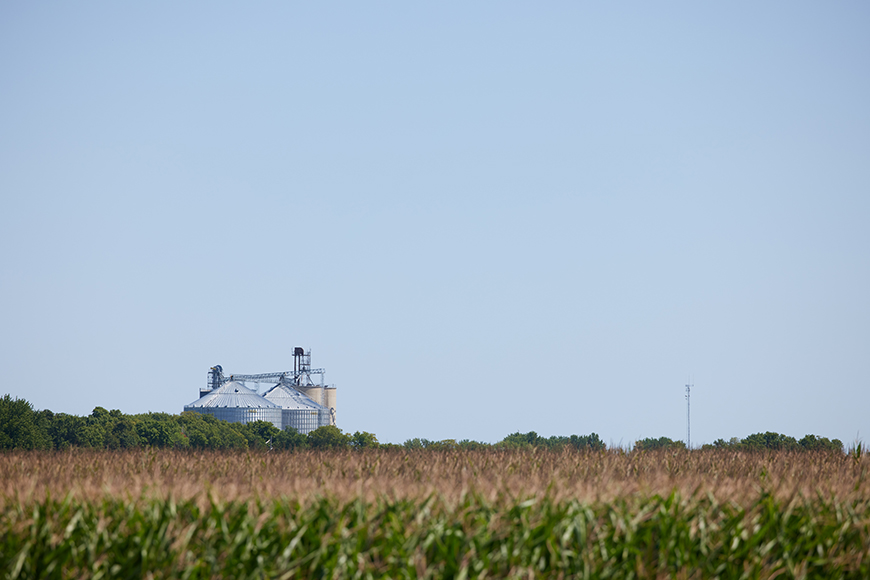Key Takeaways From The 2022 Season

With 2023 planning in full swing, it’s a good time to reflect on your successes and, perhaps, missed opportunities in 2022. As I look back on the past year, I am reminded that there is always more to learn, and trends are constantly evolving. Here are three takeaways that stand out in my mind from the 2022 season.
As you plan for tar spot management in 2023, my advice is to scout corn fields early and often, starting in the vegetative stages. If you notice the disease early, it’s more likely to threaten yield potential, and a fungicide application may be warranted to protect the crop.
In 2022, we saw some interesting shifts in nutrient deficiencies compared to recent years. For example, boron and zinc deficiencies are typically common in corn and soybeans, especially early in the season. This year, however, sulfur and manganese seemed to be the most limiting nutrient deficiencies in corn and soybeans.
Why did we see these nutrient trend shifts? There may have been less boron deficiency due to drier conditions or because farmers are managing the nutrient more effectively. One of the reasons zinc may have been less of an issue this season is that we had a slightly slower growing season. Plants didn’t seem to grow extremely fast, so they may have been able to uptake and utilize zinc more efficiently.
We’re seeing more sulfur deficiencies in both corn and soybeans, and we know that limited sulfur in corn often coincides with limited potassium levels. Manganese was commonly the most limiting nutrient in the reproductive stages for corn and soybeans. Manganese is critical for efficient photosynthesis, and we need to experiment with late-season applications to better understand how the micronutrient contributes to yield potential.
As you plan fertility for 2023, I encourage you to continue managing for boron and zinc. Although we didn’t see high deficiencies this season, historically, these two nutrients have been a challenge for growers and we know they can provide yield contributions. You should also consider your sulfur management strategy for next season. Across all crops in most regions, sulfur deficiencies are becoming more common. Finally, there may be opportunity to capitalize on late-season manganese applications. If you’ve never made a manganese application, 2023 could be a good year to apply the micronutrient on some trial acres. A foliar product like MAX-IN® Ultra Manganese is a good option for late-season applications.
Every season brings new challenges and opportunities. As you look back on 2022, use what you’ve learned to fine-tune your management plan and make adjustments that will position you for success in 2023. Reach out to your local WinField United retailer for customized recommendations to help you meet your goals.
All photos are either the property of WinField United or used with permission.
© 2022 WinField United. Important: Before use always read and follow label instructions. Crop performance is dependent on several factors many of which are beyond the control of WinField United, including without limitation, soil type, pest pressures, agronomic practices and weather conditions. Growers are encouraged to consider data from multiple locations, over multiple years and to be mindful of how such agronomic conditions could impact results. MAX-IN and WinField are trademarks of WinField United.
1. Well-Managed Crops Are Resilient to Stress.
After a cool, wet start, followed by excessive heat and drought in some areas, many farmers were surprised by the relatively high-yielding corn and soybean crops harvested this fall. Yield expectations throughout the season were low, but we saw that much of a crop’s yield could be made late-season. Growers who stuck with their management plans produced healthier plants that were more resilient to in-season stress. That resulted in better grain fill and test weight in both corn and soybeans.2. There’s More to Learn About Tar Spot.
We’ve been tracking tar spot for more than five years, but there’s still a lot to learn about how this disease migrates and impacts corn. In 2022, tar spot infected areas that haven’t typically seen high pressure. Likewise, historically high tar spot pressure areas were only moderately impacted this season. Tar spot continues to migrate west, and weather trends probably played a part in that migration this season. However, some areas seemed to have optimal weather patterns for tar spot, but the disease wasn’t particularly prevalent. So, while weather certainly plays a role in tar spot development, it isn’t the only predictor of disease development. For many, the new locations and high thresholds of tar spot infection were unexpected this season.As you plan for tar spot management in 2023, my advice is to scout corn fields early and often, starting in the vegetative stages. If you notice the disease early, it’s more likely to threaten yield potential, and a fungicide application may be warranted to protect the crop.
3. Nutrient Deficiency Trends Are Shifting.
Every year, WinField United analyzes thousands of tissue samples from farms nationwide to deliver nutrient trend reports. These reports give growers and retailers real-time updates on local plant nutrient status and can help inform in-season fertility adjustments. If you missed this year’s reports, you can still get historical nutrient deficiency information by county using our Crop Nutrition Trend Map.In 2022, we saw some interesting shifts in nutrient deficiencies compared to recent years. For example, boron and zinc deficiencies are typically common in corn and soybeans, especially early in the season. This year, however, sulfur and manganese seemed to be the most limiting nutrient deficiencies in corn and soybeans.
Why did we see these nutrient trend shifts? There may have been less boron deficiency due to drier conditions or because farmers are managing the nutrient more effectively. One of the reasons zinc may have been less of an issue this season is that we had a slightly slower growing season. Plants didn’t seem to grow extremely fast, so they may have been able to uptake and utilize zinc more efficiently.
We’re seeing more sulfur deficiencies in both corn and soybeans, and we know that limited sulfur in corn often coincides with limited potassium levels. Manganese was commonly the most limiting nutrient in the reproductive stages for corn and soybeans. Manganese is critical for efficient photosynthesis, and we need to experiment with late-season applications to better understand how the micronutrient contributes to yield potential.
As you plan fertility for 2023, I encourage you to continue managing for boron and zinc. Although we didn’t see high deficiencies this season, historically, these two nutrients have been a challenge for growers and we know they can provide yield contributions. You should also consider your sulfur management strategy for next season. Across all crops in most regions, sulfur deficiencies are becoming more common. Finally, there may be opportunity to capitalize on late-season manganese applications. If you’ve never made a manganese application, 2023 could be a good year to apply the micronutrient on some trial acres. A foliar product like MAX-IN® Ultra Manganese is a good option for late-season applications.
Every season brings new challenges and opportunities. As you look back on 2022, use what you’ve learned to fine-tune your management plan and make adjustments that will position you for success in 2023. Reach out to your local WinField United retailer for customized recommendations to help you meet your goals.
All photos are either the property of WinField United or used with permission.
© 2022 WinField United. Important: Before use always read and follow label instructions. Crop performance is dependent on several factors many of which are beyond the control of WinField United, including without limitation, soil type, pest pressures, agronomic practices and weather conditions. Growers are encouraged to consider data from multiple locations, over multiple years and to be mindful of how such agronomic conditions could impact results. MAX-IN and WinField are trademarks of WinField United.





